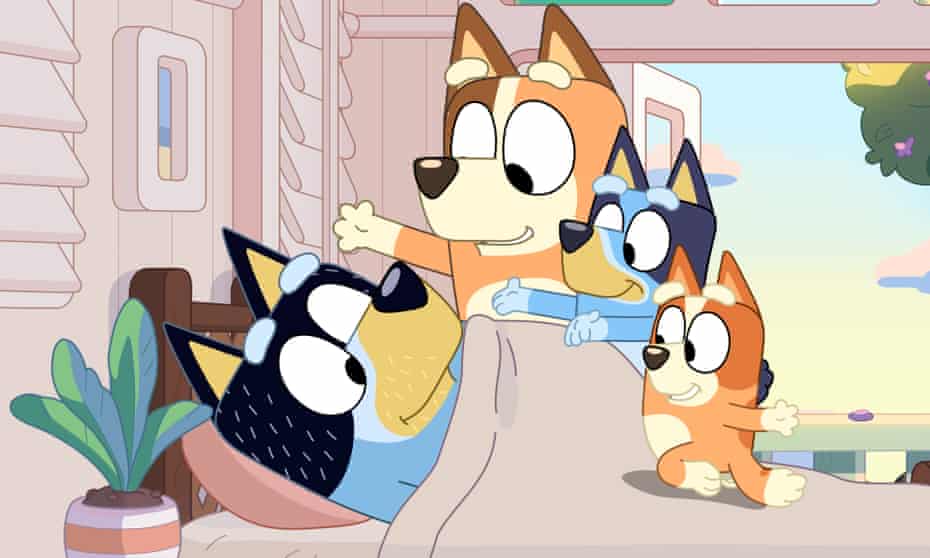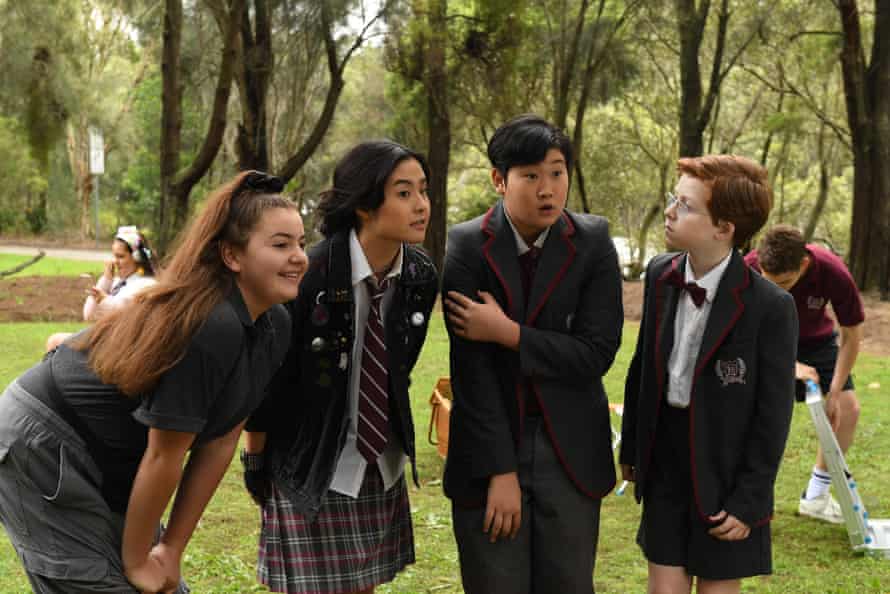Extract from The Guardian
Seven children’s shows were produced in last financial year – down from 14 – with six of those financed by the ABC.

The
number of children’s titles produced in Australia dropped from 14 in
2019-20 to seven in 2020-21, and six of those – including Bluey series 3
– were financed by the ABC.
Apart from Bluey, the ABC produced The Strange Chores series 2, and live action titles Born to Spy, Hardball series 2, Itch series 2 and MaveriX.
The three free-to-air broadcasters and all the streaming services combined, financed only one children’s show, Dive Club, which was a co-production between Network 10 and Netflix.
In August last year Guardian Australia reported the government’s plan for a “simplified” quota system for Australian drama and children’s TV would result in more than half of that content disappearing from free-to-air television.
Overall, the report showed an uptick in the level of expenditure on drama production to a record $1.9bn, although the vast majority of that was from foreign projects: $874m was spent on Australian projects and $1.04bn on international projects, classified as those which were either shot or post-produced in Australia.

Screen Australia chief executive Graeme Mason said the interruptions to the production sector from Covid-19 had been tough but had produced some unexpected outcomes – like more foreign productions moving to Australia.
Mason said while the sector had undoubtedly lost work from the drop in production, children had not suffered because they were “predominantly watching television on the ABC, on ABC Me, or online”.
“We’re well aware and we’re looking at the impact on kids’ producers,” Mason said. “But we are balancing that by saying the impact on the kids themselves is not the same as that impact on the producing companies.
“To be absolutely fair, we’ve got a couple of shows in production now, which would be in next year’s report, with Channel 10.”
Screen Producers Australia (SPA) say the increase in expenditure last year has largely been generated by foreign productions ($1.04bn up from $413m pre-pandemic) working in Australia.
“While we welcome the overall strong result, the $874m in Australian content expenditure was in fact only a modest rise on pre-pandemic levels ($797m 2018/19),” SPA president Matt Deaner said.
“This is of concern given that this year’s figure would include a substantial number of projects which were delayed in 2019-20 and which subsequently commenced in 2020-21.”
Australian producers have argued there is a need for a regulatory structure because children are missing out on Australian content and the industry has lost a lot of work in children’s television.
The government handed them a break under the cover of Covid in April 2020 when communications minister, Paul Fletcher, announced the regulations would be suspended for 2020, a move which was made permanent in September.
The broadcasters argued quotas for commercial broadcasters should be relaxed to account for the competitive new media environment, which included streaming services such as Netflix and platforms like YouTube.

The Screen Australia report also gives a snapshot of the growth in Australian productions on streaming services. Between 2016 and 2021, 29 Australian drama titles were produced for first release on the streaming platforms, generating 115 hours of Australian content.
The government has suggested they spend 5% of their local revenue on Australian productions, but the struggling screen industry wants them to spend 20% of their local revenue on new Australian drama, documentary and children’s content, in line with France and Canada.
Of the Australian streaming productions, 18 were released on Stan, which is owned by Nine Entertainment, and five on Netflix, with the remainder released across Amazon, Acorn TV and Presto.
Five years ago the average budget for a title was $800,000 but last year it rose to $13.5m.
The amount spent on adult Australian drama has also fallen, from $326m in 2018-19 to $189m in 2019-20.
Commercial free-to-air broadcasters are still required to ensure that 55% of all content they broadcast is Australian.
No comments:
Post a Comment